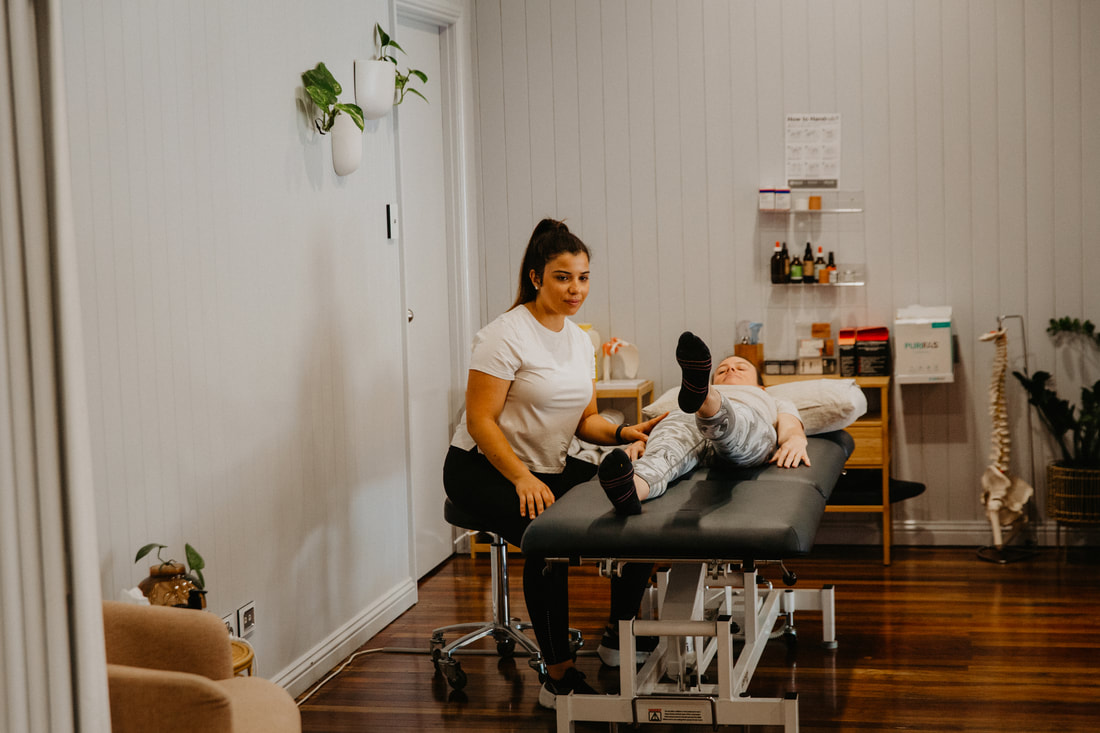Ehlers-Danlos Syndrome Physiotherapy Brisbane Southside
What is Ehlers-Danlos Syndrome (EDS)?
Ehlers-Danlos Syndrome (EDS) is a group of connective tissue disorders characterised by hypermobility (joints that stretch further than normal), skin that's easily bruised and hyper-extendable, and a tendency to scar easily. There are various types of EDS, each with specific features and complications, but most types involve joint hypermobility. EDS is frequently presents with non-musculoskeletal symptoms and syndromes caused by connective tissue laxity, such as postural orthostatic tachycardia (POTS), mast call activation syndrome (MCAS), temporo-mandibular disorders (TMD), irritable bowel syndrome (IBS) and others.
What Causes Ehlers-Danlos Syndrome?
EDS is caused by mutations in genes responsible for the production of collagen, a protein essential for the strength and elasticity of various tissues. Most forms of EDS are inherited in an autosomal dominant pattern, which means only one of the two copies of the gene in question must be altered to cause a disorder. A few are inherited in an autosomal recessive pattern, which means both copies of the gene must be altered for a person to be affected. Sporadic EDS can also occur without family history.
How is Ehlers-Danlos Syndrome Diagnosed?
A diagnosis of EDS often involves:
How can Physiotherapy Help with Ehlers-Danlos Syndrome?
Physiotherapy plays a pivotal role in managing EDS:
How can Clinical Pilates Help with Ehlers-Danlos Rehabilitation?
Clinical Pilates offers a tailored approach beneficial for EDS:
What is the Prognosis for Ehlers-Danlos Syndrome?
The prognosis for EDS varies depending on the type and the severity of symptoms. While EDS is a lifelong condition, many individuals can lead full, active lives. However, it's vital to manage symptoms, reduce injury risk, and stay connected with a medical team well-versed in EDS.
Living with Ehlers-Danlos Syndrome: Tips for Daily Life
If you or a loved one are living with EDS, come in and see our friendly Coorparoo and Tarragindi physiotherapists today!
Call us on 07 3706 3407 or email [email protected] for a booking. We would love to work with you.
Ehlers-Danlos Syndrome (EDS) is a group of connective tissue disorders characterised by hypermobility (joints that stretch further than normal), skin that's easily bruised and hyper-extendable, and a tendency to scar easily. There are various types of EDS, each with specific features and complications, but most types involve joint hypermobility. EDS is frequently presents with non-musculoskeletal symptoms and syndromes caused by connective tissue laxity, such as postural orthostatic tachycardia (POTS), mast call activation syndrome (MCAS), temporo-mandibular disorders (TMD), irritable bowel syndrome (IBS) and others.
What Causes Ehlers-Danlos Syndrome?
EDS is caused by mutations in genes responsible for the production of collagen, a protein essential for the strength and elasticity of various tissues. Most forms of EDS are inherited in an autosomal dominant pattern, which means only one of the two copies of the gene in question must be altered to cause a disorder. A few are inherited in an autosomal recessive pattern, which means both copies of the gene must be altered for a person to be affected. Sporadic EDS can also occur without family history.
How is Ehlers-Danlos Syndrome Diagnosed?
A diagnosis of EDS often involves:
- Clinical Evaluation: Reviewing medical history, family history, and physical examination focusing on joint hypermobility, skin texture, and any other symptoms.
- Genetic Testing: Identifying mutations can help specify the type of EDS.
- Other Tests: Depending on symptoms, one might undergo echocardiograms or skin biopsies.
How can Physiotherapy Help with Ehlers-Danlos Syndrome?
Physiotherapy plays a pivotal role in managing EDS:
- Joint Protection Strategies: Techniques to prevent dislocations and reduce injury risk.
- Strength training: Enhancing muscle tone to provide better joint support.
- Pain Management: Techniques like manual therapy, TENS, dry needling and can be beneficial.
- Mobility and Flexibility: Safely improving movement while ensuring joints aren't overstressed.
- Education: Guidance on understanding the condition, daily living modifications, and preventive care.
- Taping and bracing
How can Clinical Pilates Help with Ehlers-Danlos Rehabilitation?
Clinical Pilates offers a tailored approach beneficial for EDS:
- Recumbent position to exercise can help in control of autonomic symptoms such POTS or dysautonomia
- Strengthening: Building a robust core can improve overall stability, especially important for those with joint hypermobility.
- Controlled Movement: Practicing controlled exercises to prevent overextension.
- Body Awareness: Enhancing proprioception (sense of body position) which can be compromised in EDS patients.
- Personalised Program: Recognising that every EDS patient is unique, exercises are adapted to individual needs.
What is the Prognosis for Ehlers-Danlos Syndrome?
The prognosis for EDS varies depending on the type and the severity of symptoms. While EDS is a lifelong condition, many individuals can lead full, active lives. However, it's vital to manage symptoms, reduce injury risk, and stay connected with a medical team well-versed in EDS.
Living with Ehlers-Danlos Syndrome: Tips for Daily Life
- Always maintain open communication with your healthcare providers.
- Consider wearing protective gear or braces to stabilise joints.
- Be mindful of your body's signals. Rest when necessary and pace your activities.
- Stay connected with EDS support groups or communities for shared experiences and advice.
If you or a loved one are living with EDS, come in and see our friendly Coorparoo and Tarragindi physiotherapists today!
Call us on 07 3706 3407 or email [email protected] for a booking. We would love to work with you.
Who to book in with:
Yulia Khasyanova
|

